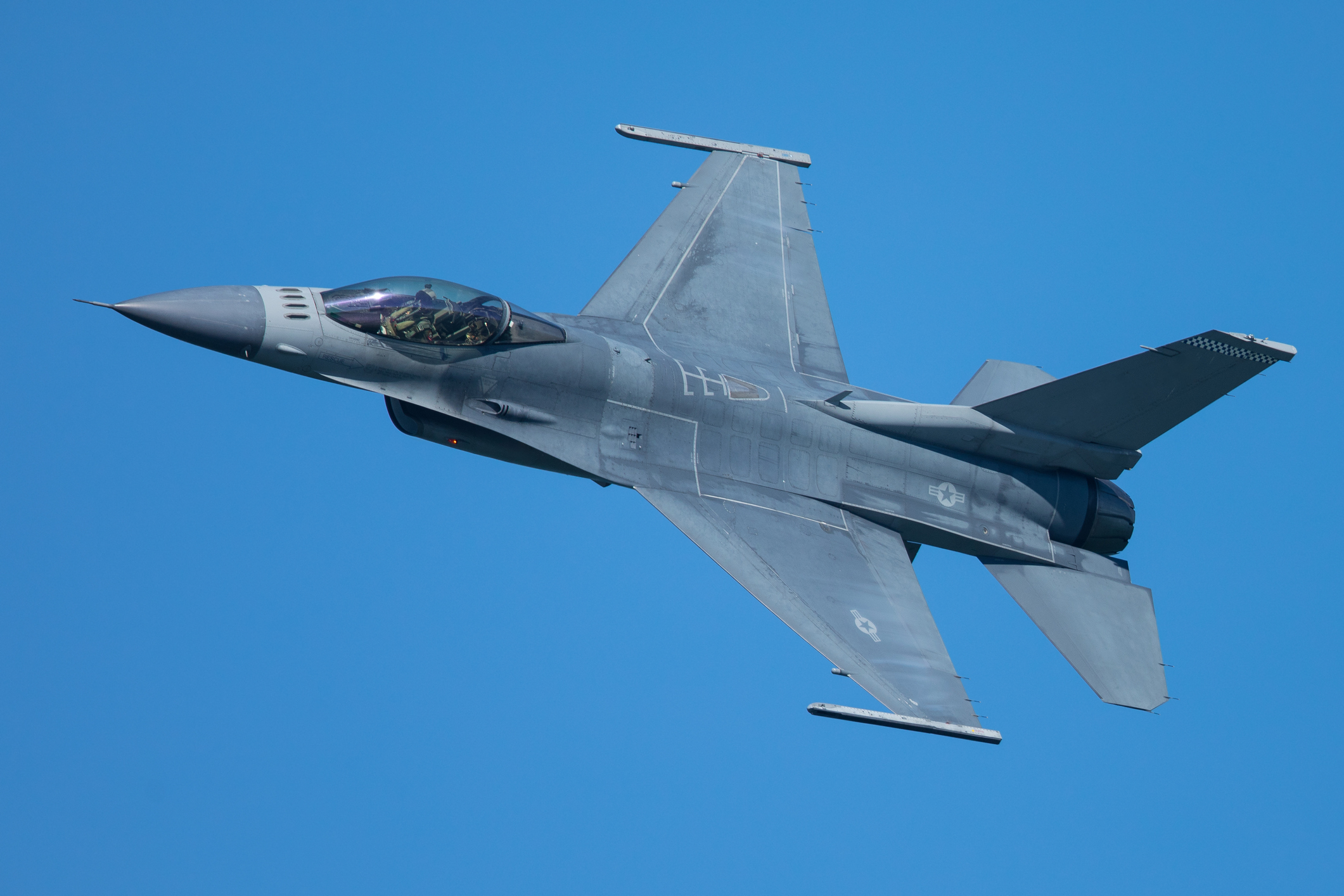Best Figher Jet - Here's what you need to remember: The F-22 also collided with current events, as the economic demands of the wars in Iraq and Afghanistan and a lack of an equal adversary made the $300 million fighter jet, according to administration officials at the time, unsustainable.
In the late 1990s, the United States was in its post-Cold War peak as an aviation giant. Not only does it have the largest fighter jet fleet in the world, but it also produces the only fifth-generation fighter: the F-22 Raptor. By 2009, the US government had turned against the fighter, and only 187 were produced. What happened to the F-22 program and why?
Best Figher Jet

There is no doubt that the F-22 Raptor was the greatest air superiority fighter of its time. The problem was that the development of the fighter took so long that its main rival, the Soviet Air Force, stopped working.
The Planet's Best Stealth Fighter Isn't Made In America
The F-22 also collided with current events, as the economic demands of the wars in Iraq and Afghanistan and a lack of an equal adversary made the $300 million fighter an unsustainable expense, according to administration officials at the time. The economic recession – almost depression – that started in 2008 and ended only in 2010 is definitely another reason.
The story of the F-22 Raptor begins in the early 1980s. Wanting to maintain America's lead in air superiority fighters, the US Air Force began looking for a replacement for the F-15C Eagle. In 1990, flights between Northrop YF-23s and Lockheed Martin YF-22s resulted in the service selecting the YF-22, later renamed the F-22 Raptor, as the cornerstone of US air power.
Initially, the US Air Force believed 750 new fighters would cost about $26.2 billion ($35 million per aircraft). In 1990, with the Cold War drawing to a close, the government of George H.W. Bush has reduced the purchase to 648 aircraft. In 1997, the number dropped again to 339, and in 2003, the number was reduced again to 277. In 2009, the number was reduced again to 187, eight aircraft were added for test and development, and the production line was discontinued. .
The road to program implementation is also long. The Advanced Tactical Fighter project, which started the F-22 Raptor, began in 1981. The Raptor's first flight was in 1990, and the aircraft achieved initial operational capability in 2005. In comparison, the F-15 Eagle went from design selection to first flight in seven years, from 1965 to 1972, and reached initial operational capability in 1976. .
The Top Ten Fighter Aircraft: 1985
In other words, the F-22 took twice as long to develop as the F-15. During this time, the Soviet Union transitioned from a competing superpower into a junkyard, disintegrating in 1991. The powerful Soviet Air Force was split among the surviving republics, and development of fighter aircraft in the newly formed nations was limited to improvements to existing designs, such as the MiG. 29 and Su-30. Few and flown by pilots with minimal flying hours during the lean economy years of the 1990s, there's no compelling reason to go after the F-22. The F-22 also gained air-to-ground capability during this time, expanding its usefulness.
The F-22 also fell victim to the wars in Iraq and Afghanistan. The enormous cost of supporting two low-intensity conflict wars at the same time makes the costs of peer-to-peer warfare—which did not exist at the time—hard to justify. The F-22, which has not yet been deployed to Iraq or Afghanistan, is often described as a budget battle against weapons systems that are critical to the wars the United States is actually waging. The F-22, fair or not, is often portrayed as a mine-resistant ambush cover vehicle-funded program that saves ground troops in Iraq and Afghanistan from the dangers of improvised explosive devices.
The long development period also places the F-22 in indirect competition with the F-35 Joint Strike Fighter. Although different aircraft are designed for different roles, the F-35 is a cheaper aircraft with similar - and in some cases greater - capabilities than the F-22, and appears to have played a role in Secretary of Defense Robert Gates' recommendation to retire the F-22. -22. When Gates did, he instead recommended speeding up the F-35 program. Gates has predicted that the United States will have 1,700 F-35s by 2025 — a figure that, given cost overruns and controversial program delays, the Pentagon is unlikely to meet.

Finally, in 2008, the United States entered its worst economic crisis since the Great Depression, with GDP dropping by as much as 8 percent in 2009, the year the decision was made to stop production of the F-22. The recession will last until 2010, and the recovery is still ongoing. This adds to the pressure to concentrate on immediate threats and delay investment in great power wars, something that seemed far away in 2009.
Russia Loses 24 Of Its Best Fighter Jets, Turns To Obsolete Planes: Ukraine
Eight years after the F-22 program was discontinued, with the benefit of hindsight, the verdict of history is mixed. On the one hand, the pause paved the way for funding for other, more urgent, tactical programs. Lives have no doubt been saved by diverting billions to the production of MRAPs.
On the other hand, the world has changed once again in recent years, and the air forces of China and Russia are in the midst of extensive modernization efforts, just as the two countries have become more aggressive on the world stage. Three fifth-generation aircraft are now under development – the Chinese J-20 and FC-31, and the Russian/Indian T-50 – that will challenge the US Air Force. None of these aircraft existed in 2009, when Secretary Gates scrapped the F-22. Critics of the termination charge that the Department of Defense is making tactical choices at the expense of weapons that can prevent the enemy from starting a great power war, making more catastrophic wars more likely.
The F-22 Raptor is affected by a number of factors, but perhaps the main reason is a program that has dragged on for so long that it is at greater risk of being damaged by current events. The Littoral Combat Ship—which, ten years after development began, is still armed with just one fifty-seven millimeter gun—is moving in the same direction. The F-22 wasn't the first magic weapon to meet an early end, and it won't be the last.
In 2009, he co-founded the defense and security blog Japan Security Watch. You can follow her on Twitter: You're reading a free article with possibly different opinions from The Motley Premium Investing Services. Become a Motley Fool member today for instant access to our premium analyst recommendations, in-depth research, investment resources and more. Study again
Which Is The Best Fighter Jet In The World?
Low price means high sales volume means high profit. So what does this mean about overpriced fighter planes?
In the 21st century, there are fighter jets and then fighter jets. The kind you get depends on how much you want to pay.
Got hundreds of millions of dollars to throw away? Then, like the US government, you can hire Lockheed Martin (LMT -2.58%) to design and build the F-22 Raptor stealth fighter—which is considered the most capable air superiority fighter in the world. (Of course, if you curtail your production before efficiency scales up, those planes will cost $412 million each).

Alternatively, that same money will buy you a handful of perfectly serviceable F/A-18 or F-15 Boeing fourth-generation (BA -0.09%) fighter jets, which sell for around $100 million each.
Top Gun: How Fighter Jet Pilots Withstand High G
Shopping on a budget? You might like a good Soviet-era Sukhoi Su-34 "Fullback". (Retail price: $18 million). Or if you prefer to buy domestic, Textron's (TXT -1.67%) new Scorpion is stealing $17 million per plane.
Depending on the needs of the country, different buyers choose different fighters and different prices. But what are the most popular combinations
10. Chengdu J-7 Fishbed (out of production) China's J-7 fighter jet makes its first appearance at No. 10 in this year's Flightglobal Insight "World Air Forces 2015" report. This is actually a Chinese version of the old Soviet MiG-21 and is no longer in production. However, the 418 remains in service, giving the fighter a 3% global market share.
The Chinese export version of the J-7 is called the F-7, and is also a twin of the Russian MiG-21. Number F-7 has not suffered any losses in the past 12 months. A year ago, 460 was in operation worldwide. Today, each one still flies, giving the F-7 a 3% market share.
Here's Why The Su 27 Flanker Is The Best Fighter Jet In The World Only In Video Games
8. Northrop Grumman F-5 Tiger - List price: $20 million to $25 million (estimated) After about two dozen retirements over the past year, only 468 Northrop F-5 Tigers are still flying. The aircraft is no longer being produced, but maintains a 3% market share. The website AircraftCompare.com estimates that if the Tiger were produced today, it would likely cost around $20 million.
Russia's answer to the US A-10 Thunderbolt II "Warthog", the Su-25 is a dedicated "tank destroyer". It also seems to be almost as popular as wild boar. In the past year, only one Su-25 has been retired.
With 506 aircraft still in service, it also holds a 3% market share. With a new variant now in production --

Best private jet service, best jet card programs, best private jet charter, best jet charter, best jet septic, best jet ski insurance, jet best ink, best jet card, best fractional jet ownership, best air jet bathtubs, best mma figher, best jet ski covers
0 Comments